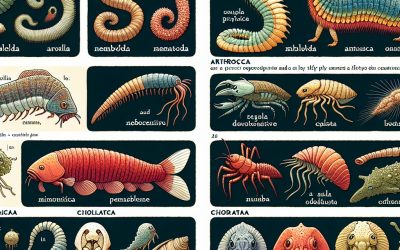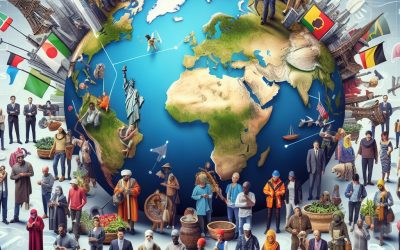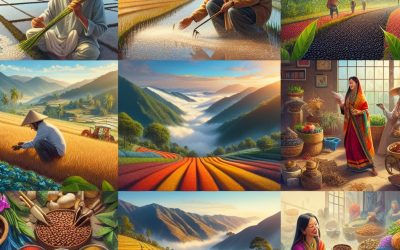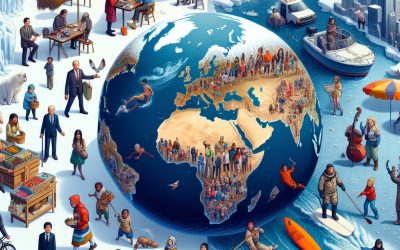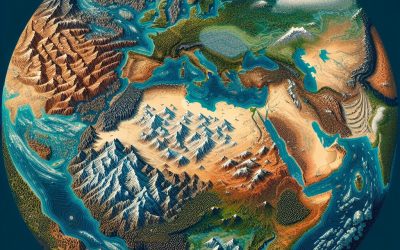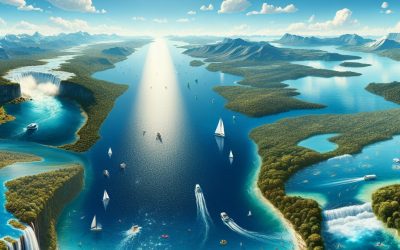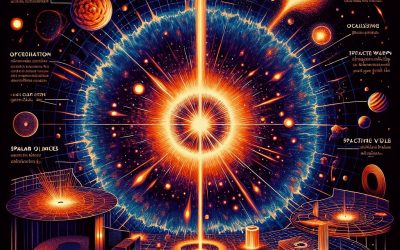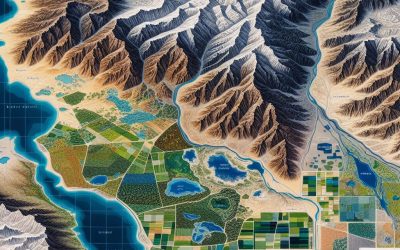Explore the World Through Geography, Natural Resources & Daily History
Clear, reliable and engaging guides that help you understand our planet — from UK geography education to global natural resources and On This Day history events.
Explore, discover, and learn about the wonders of our world! At Earth Site, we’re passionate about bringing geography, history, and science to life for curious minds of all ages. Whether you’re delving into historical events, uncovering the mysteries of the natural world, or seeking interactive resources, you’re in the right place.
Here, you can uncover the stories behind historical events, explore the natural wonders of our planet, and gain valuable insights into how the Earth’s systems shape our daily lives. From the towering peaks of mountain ranges to the far-reaching impacts of human innovation, we aim to make every topic both engaging and informative.
Start your journey of discovery with us today, and let’s make learning an adventure!
What We Cover
Earth Site brings together engaging and accessible educational content designed to help you understand the world, its history, and its natural systems.
🌍 Geography Education (UK & Worldwide)
We publish clear, easy-to-understand geography resources for students, teachers and curious learners. Our guides support geography education in the UK and cover physical geography, climate, ecosystems, population, and global development.
⛏️ Natural Resources & Environmental Geography
Explore detailed country profiles covering natural resources, mining, energy, geology and global environmental challenges. We show how nations manage minerals, water, land and ecosystems, and why these resources matter.
📅 On This Day in History
Every day has a story. Our On This Day history series features major events, anniversaries, traditions, and cultural milestones from around the world — with timelines, context, and fun facts.
TIMELINE
Animal Phylum – Phyla
Kingdom Animalia – Phylum (Phyla = plural): (within the animal kingdom there are some 36 phyla but of these phyla there are nine that are most commonly used. These nine are listed first) What are Phyla or Phylum? The Most Common Phyla Annelida Arthropoda or Arthropods Chordata Cnidaria Echinoderms Mollusca Nematoda Platyhelminthes Porifera Less Common Phyla Acanthocephala Acoelomorpha Brachiopoda Bryozoa Chaetognatha Ctenophora Echiura Entoprocta Gastrotricha What are Phyla or Phylum? Phyla – the plural of phylum- is the name for a hierarchical grouping in taxonomy. All living organisms can be placed into groups based on their evolutionary path (or physical characteristics as it was before our understanding of evolution). Each organism belongs to a kingdom – animal, plant, bacterium or fungus – and these organisms can then be grouped into sub-groups. The process can be continued until you find the species of the organism. The Phyla of an organism is the subgroup of organisms from the animal kingdom (Kingdom Animalia). The Most Common Phyla Phylum Annelida Annelida (commonly known as segmented or ringed worms contains 3 classes (class Polychaeta, class Hirudinea and class Clitellata (also known as class Oligochaeta) This Phylum has two main morphological features. One feature is their segments or metamerism each with separate respiratory, excretory and locomotary organs that are repeated in each segment. The number of segments increases with age; the youngest of which are found at the posterior of the animal. The second common features are the ‘chaetae’ which are little bristles that can be found on each segment and may be thin tubular structures or hooks); Phylum...
Periodic Table Test
Your Periodic Table Test may take a minute to load. If you have to navigate away from this page for any reason, don’t worry, you will have the option to resume your test from the point you left upon your return. The test may have multiple choice, multiple answer or true/false questions and is timed but has no time limit. It should be considered an aid to study for exams or merely a test of your knowledge base giving you indication of areas you may need further study in. Once you have completed your test you will be able to review your results. This will give you some indication of the area you need further study or which areas you are proficient. We recommend you take the Periodic Table Test before reading the subject matter. If you score 80% or more than you have the option of skipping the section but if you score less than 80% we recommend you read the material associated. Then try the test again until you are able to gain a passing result of 80% correct. Error: Embedded data could not be displayed. Why Use the Periodic Table Test? As previously stated tests give the user indication of their strengths and weaknesses. This allows them to spend less time studying things they are proficient in and spend more time improving their knowledge where they may have gaps. Tests are also a great tool for revision because they require the user to recall information they may have previously learnt, be it recently or some...
Backgammon
[backgammon]
Sudoku
[falltimesudoku]
Mahjong – Game
[mahjong] ...
Global Economies
Many factors or indicators can affect or be used to measure the economies of the world. This article explains these factors/indicators and explains how they effect the global economies. Creation of Money Gross Domestic Product Official Exchange Rate GDP Purchasing Power Parity GDP Difference and accuracy of OER and PPP Calculating GDP Economic Growth Calculating Aggregate Demand Interactive Map of Global Economies GDP growth (annual %) Gross savings (% of GDP) Current account balance (BoP, current US$) Government Borrowing The World Bank The International Monetary Fund (IMF) Government Bonds Interactive Map of National Debt Central Government Debt, Total (% of GDP) External Debt Stocks, Total (DOD, current US$) The Creation of Money Thousands of years ago various goods and services would have been bartered or swapped for other such items as required. A fisherman who had a good day may have far too many fish which without the storage facilities the fish would be wasted, however these excess goods were traded for other goods or services that were required. As far back as 12,000 BC the Earliest civilisation in Anatolia (modern day Asian part of Turkey) used to barter with obsidian or cows for goods and services. These items were very useful in their time (the stone obsidian was turned into tools or weapons) which is why they were largely accepted in payment. It is believed that cowrie shells had been used in China as currency from around 2,500 BC but by around 1,200 BC various Kingdoms within China had created coins which had set values and created for the...
Global Food Production
Despite global food production being adequate to meet demand more people died of hunger, or hunger related diseases, than died of AIDS, malaria and tuberculosis combined. Global Food Production Interactive Map of Global Food Production Chronic Undernourishment Global Food Production According to the World Food Programme the global food production is enough food to feed our 7 billion population (1) which through improved techniques has seen a 17% increase in food per person in the last 30 years (according to Oxfam). The increased use of fertilisers and improved irrigation has been responsible for a 70% increase in yield of crops in recent years. But this apparent abundance of food is not likely to last. Population growth, globally, has remained steady since 1975 with the addition of 1 billion every 12 years since then reaching 7 billion in 2011. The Food and Agriculture Organisation (FAO) predict that if global populations reach 9 billion (which, based on current population growth, is more likely to be 10 Billion) we will need to 60% more food (taking into account wastage etc). This may prove an impossible task if the populations eating habits and production methods don’t change dramatically. As populations rise the need for more urban land to house them is reducing the amount of agricultural land available. Additionally the demand for certain foods like meat require more land not only to be used to raise cattle but also land to grow the grain to feed them. It is believed that only 43% of cereal produced is used for direct human consumption while the remaining 47% is used to feed...
Global Population
Since the last catasphrophic event that hugely affected global population some 70,000 years ago it took the human race until 1804 (69,800 years)to reach a population of 1 billion and only 211 years to grow to 7 billion. World Human Population Global Population Interactive Data Map Origin of Humans Extinction Events Reaching 7 Billion Life expectancy Tuberculosis Life expectancy Interactive Data Map Factors that affect Life Expectancy Globa Population Demographics Global Population Demographics Interactive Map World Human Population Year (at the start of) World Population total World Population Growth (%) Percent of Population Aged 0-14 Percent of Population Aged 15-64 2013 7,124,543,962 1.16 26.31 65.75 2012 7,043,105,591 1.127 26.415 65.756 2011 6,964,638,027 1.179 26.548 65.716 2010 6,883,512,372 1.172 26.712 65.638 2009 6,803,742,004 1.18 26.905 65.521 2008 6,724,646,992 1.188 27.127 65.365 2007 6,645,716,553 1.184 27.385 65.170 2006 6,567,959,806 1.198 27.683 64.935 2005 6,490,176,815 1.211 28.024 64.663 2004 6,412,516,968 1.222 28.412 64.353 2003 6,335,086,088 1.235 28.841 64.009 2002 6,257,804,216 1.259 29.295 63.646 2001 6,180,015,757 1.278 29.750 63.280 2000 6,102,001,950 1.311 30.187 62.925 1999 6,023,047,888 1.347 30.599 62.588 1998 5,943,024,724 1.383 30.986 62.269 1997 5,861,934,009 1.418 31.344 61.975 1996 5,779,968,275 1.439 31.670 61.713 1995 5,697,950,314 1.490 31.960 61.488 1994 5,614,317,064 1.492 32.214 61.301 1993 5,531,794,369 1.535 32.430 61.155 Use the global population interactive data map below for more information about each country’s population records for the last 50 years. All data sourced from the World Bank – a trusted source for many...
Geography of Earth
The Geography of Earth is unique in our solar system in that it is predominantly covered by water with the oceans covering 70.1% of the surface and with only 29.1% dry land (this is without taking into account all the lakes and rivers etc). Land Mass Continents Six continent of the world Seven continents Islands Lines of Latitude Lines of Longitude Time Zones Interactive map of World Geography Earth’s Environment Temperature variations Topography Atmospheric Pressure The Geography of Earth is unique in our solar system in that it is predominantly covered by water with the oceans covering 70.1% of the surface and with only 29.1% dry land (this is without taking into account all the lakes and rivers etc). Land Masses Continents The land masses of the world are normally divided into seven continents. The term continent comes from the Latin “terra continens” meaning continuous land and this ambiguous term has led to many variations as to the number of continents. Six continent of the world There are a few variations in the six continent description of the world’s landmass. In the past it was considered that both North and South America as a single continent and this led to the Olympic symbol of five interlocking circles (Antarctica not included). This view has now changed but some now consider Europe and Asia to be a single continent known as Eurasia as they are a single landmass. However this logic would also revert thinking back to America as a single continent and Africa being combined with Asia and Europe to form a super continent. This would allow...
Bodies of Water
The geography of earth includes many bodies of water from streams, rivers and lakes to channels, seas and oceans with many of these terms overlapping in their definitions. Bodies of Water Streams Rivers Watersheds and Drainage basin Ponds Lakes Lochs Is The Caspian Sea a Lake? Lagoons Water Bodies Interactive Data Map Seas Oceans Bodies of Water The geography of earth includes many bodies of water from streams, rivers and lakes to channels, seas and oceans with many of these terms overlapping in their definitions. Throughout human history all major civilisations built their cities near to large fresh water bodies, normally rivers, the most important natural resource for life. Sea or Oceans have also proved valuable to the economic growth of most civilisations and today they carry 90%of the world’s trade in huge ships (the exception to this was the ‘Silk Road’, a land based trade route set up to by various Chinese Dynasties to sell their goods). It was England’s and later Great Britain’s trade routes and Navy that allowed them to produce the largest Empire ever seen, an empire that covered a quarter of the globe and on which the sun never set. Streams The smallest body of water can be termed as a stream which describes a flowing channel of water that usually leads to a larger body of water. (This is not strictly true as it is also used to describe a warmer and faster moving body of water within other water bodies such as the gulfstream but this is not a common usage of the term stream). The term stream itself...
Big Bang Theory
The big bang theory accompanied by inflation theory, is to date, the most accurate explanation for the creation of the universe. Naming the Big Bang Theory Prediction of the Big Bang The Big Bang from a Singularity Evidence of the Big Bang Theory The Big Bang from a Quantum Fluctuation Heisenberg’s Uncertainty Principal What are Quantum Fluctuations? Gravitational Energy is Negative Quantum Fluctuation Theory Expansion Theory Planck Time Grand Unified Theory Naming the Big Bang Theory The term ‘big bang theory’ was coined by Sir Fred Hoyle who helped develop Steady State Theory in the 1940’s. According to steady state theory the universe had no beginning and has always been expanding while the overall density of matter in the universe remained the same. After Edwin Hubble’s discovery of the expanding universe there were two main theoretical models of the universe. One was that the universe had a beginning (what we call the big bang) and the other was the steady state theory. The steady state theory was the most recognised for many years, due to miscalculations about the rate of expansion, and Hoyle termed the alternate theory ‘the big bang theory’ to mock it with images of cartoon explosions. Prediction of the Big Bang Initially the Big Bang theory was implied by impressive physicists, mathematician and priest named Georges Lemaitre. He theorised that space was expanding contrary to Albert Einstein’s theory of relativity. This prompted Einstein to look at his work once more particularly the Maths he had used (where he had included the ‘universal constant’ in order to comply...
Geographical Land Use
Geographical land use is an article discussing the environmental features on Earth and how humans have adapted the environment to meet their requirements Geographical Land Use Urban land Advantages of Urbanisation Problems with Urbanisation Additional Effects of Urbanisation Rural Land Agricultural Land Arable Land Woodland Deserts How Are Deserts Formed? Convection Cells Coriolis Effect Rain Shadow Interactive World Map of Land Use Geographical Land Use Life on earth has evolved and adapted to suit their environment and continues to do so. This has been known for centuries, long before Charles Darwin took his famous journey, but what Darwin showed us was the mechanism by which this adaptation occurs. It is naturally occurring mutations that either benefit or hinder an animal’s survival and reproduction that determines if that mutation survives and in the case that it does a new better equipped sub-species is born. Public domain image of a termite mound However amazing and intricate these adaptations have become none are perfect and in a world with an ever changing environment most animals adapt their own habitat to some degree in order to aid their survival. From burrows to nests all are made from the surrounding resources perfectly designed for their inhabitants. Humans have taken this adaptation of the environment to new levels allowing them to live in almost any location on the earth and live with comforts beyond the comprehension of all other species. This has come at some cost to the planet but this topic is discussed in the world pollution section. This article about geographical land use is concerned with how we...
